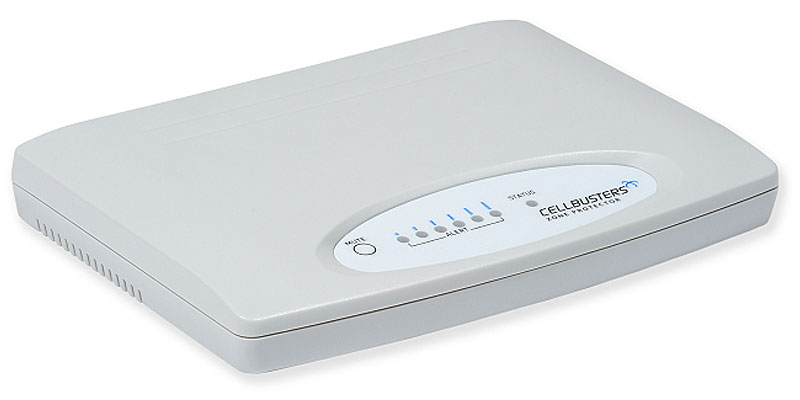
Guest Editorial by Dr. Danny Ritttman, Chief Technology Officer at GBT Technologies
Government organizations and commercial businesses understand the need to protect themselves from malicious cyberattacks intent on stealing their trade secrets, intellectual property, and other sensitive data.
However, while most companies and government agencies will have effective cybersecurity policies in place for protecting their wired Ethernet connections, they often don’t pay enough attention to the lurking vulnerabilities posed by their unsecured wireless-based devices.
Many of these devices can be easily hacked through radio frequency (RF) attacks.
Today, there are up to 15 billion wireless devices in the world that communicate through the RF spectrum.
This includes mobile phones, laptops, tablets, wireless keyboards, handheld inventory scanners, and countless other smart devices scattered around your typical corporate building.
That number is expected to grow as more government agencies, and commercial businesses embrace the advantages of the Internet of Things (IoT) infrastructures.
It’s no longer just smartphones and laptops that can present an attack vector. Any device with IoT capability – be it a smart wearable, a medical device, even the refrigerator in the break room – can now be a prime target for RF security breaches.
As such, every business and government agency needs to recognize the dangers posed by RF attacks and take steps to safeguard their organizational airspace and sensitive data better.
(Learn More. Industry leaders discussed cybersecurity concerns around the Internet of Things (IoT) and the role NIST could play to help secure our future back in 2018. Featuring thought leaders from the Global Cyber Alliance, Symantec (now NortonLifeLock Inc.), Cisco, Cylance Inc. (now Blackberry Security), Tufts University, the Cloud Security Alliance, and Twistlock (now Palo Alto Networks). Courtesy of the National Institute of Standards and Technology (NIST) and YouTube. Posted on Apr 26, 2018.)
Understanding RF
Radio waves have long served as a mode of communication for electronic devices, such as TV remotes, cellular telephones, garage door openers, and countless other devices.
Previously, radio didn’t present much, if any, threat for cyberattacks. But the recent explosion in the use of highly interconnected IoT devices has opened the floodgates to mass RF-based attacks, which traditional wire-based cybersecurity practices may not be able to detect or stop.
To understand the threat posed by RF-based attacks and the difficulties in stopping them, it helps first to understand how RF communication works. Every single device that uses Wi-Fi, Bluetooth, or Bluetooth Low-Energy (BLE) communicates through special RF key signals that are sent from one device to another when initiating a connection.
The security problem is that this signal key, when generated, is exactly the same every time.
Worse yet, the RF signal is usually unencrypted and operating on an unsecured channel, meaning it’s very easy for them to come under a “relay attack,” in which one device thinks that a trusted device is connecting when really it’s a malicious third party.
When successful, this type of RF-based attack can go completely unnoticed by a cybersecurity system that isn’t designed for detecting such threats. As far as the system is concerned, it’s just one trusted device connecting with another.
What the system doesn’t see is that the compromised device has now become a spy portal that can be used for siphoning off sensitive data or eavesdropping.
For a corporate facility that uses a wide range of IoT devices, the consequences of such a security breach are dire, opening the doors for a mass system breach through the initial bridgehead.
(Learn More. As of May 2021, more than a dozen CIA officers last year returned to the U.S. from abroad, reporting symptoms including vertigo, dizziness, and persistent headaches. Courtesy of CBS Miami and YouTube. Posted on May 10, 2021.)
Protecting Sensitive Data from RF Attacks
Nowadays, large organizations are inescapably reliant on wireless connectivity.
Therefore, it’s impractical to think you can protect your most sensitive data by simply disabling wireless features on all devices in your facility.
Other security measures such as air-gapping, in which a sensitive computer network is kept physically isolated from the internet, may also prove futile. A 2014 Israeli research study found that a compromised cellular phone could lead to a bad actor extracting data from seemingly hard-to-reach systems.
What’s needed instead is an in-depth series of security protocols to minimize the number of security gaps and attack vectors, while also allowing for the detection of unsecured RF signals.
As a first order of business, CISOs and their security teams should carry out assessments to catalog all RF-based devices, both corporate and personal, that are operating in a facility.
All RF signals on these devices should be fully secured through a key-rolling algorithm that will generate a unique signal key each time a data transfer takes place. In addition, a two-way handshake protocol will provide synchronization between the sender and receiver devices for a more secure connection.
Next, security teams should deploy additional cybersecurity systems to detect any unsecured RF signals operating within corporate airspace.
Such a system must work in real-time and provide 24/7 scanning so that the system can identify any unsecured device before it has time to do any damage.
(See a brief overview of the Zone Protector and the Zone Manger, both cell phone detection technology from Cellbusters, a Finalist in the 2022 ‘ASTORS’ Homeland Security Awards Program, and previous ‘ASTORS’ Awards Program Champion. Courtesy of Cellbusters and YouTube.)
Successfully integrating this new system within your existing cybersecurity and IoT infrastructures will also be crucial to ensuring there are no incompatibility or future-proofing issues.
Final Thoughts
Each passing year sees more businesses and government agencies embrace the benefits of IoT infrastructures.
Yet, these benefits can come with an unseen threat in the form of RF attacks that may lead to high-level data breaches and foreign government espionage.
As we move towards a more interconnected world, it’s imperative that CISOs and their security teams recognize the threat of RF attacks and take all necessary measures to plug their security gaps.
(Learn how the FBI partners with the private sector through InfraGard and the Domestic Security Alliance Council to rapidly share threat information and collaborate with the private sector to support the protection of critical infrastructure. Courtesy of the FBI – Federal Bureau of Investigation and YouTube.)
About the Author
Dr. Danny Ritttman, who serves as Chief Technology Officer at GBT Technologies, is an experienced technologist in the integrated circuit physical/backend and EDA (Electronic Design Automation) domains.
Over the past decade, he has led intelligent application development, IoT, and mobile technologies, focusing on the delivery of advanced Hi-Tech solutions.






































